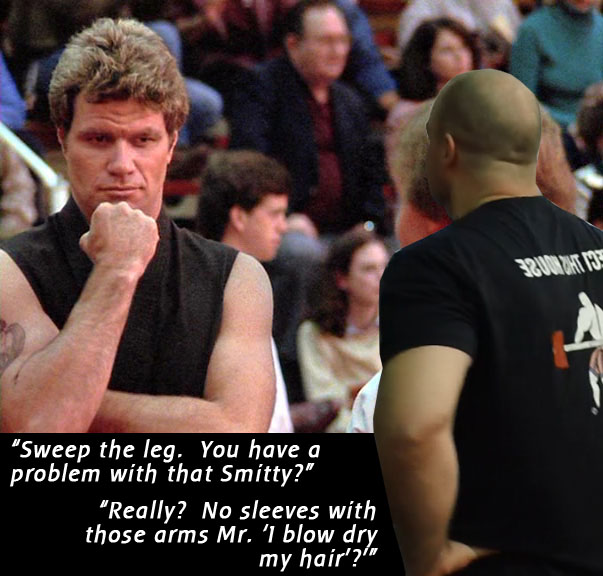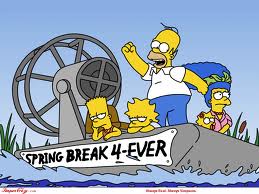Assessments: Trying to Compress 10 Years into 90 Minutes
I’m heading into Manhattan today to train with Dan Trink at Peak Performance, and then to walk around, maybe look at getting something for the wife for letting me come to New York without her. The last time I was at Peak Performance, I had Dan do a plank while another trainer stood on his back, so I’m guessing he’s got some payback in store for me when I get there. That is if I can decipher the mass transit system that takes me from Middle of Nowhere, New Jersey into the belly of the beast during rush hour so that I wind up where I want to go instead of heading to Philadelphia or Staten Island or somewhere like that.
The main reason I’m on the east coast this weekend is to attend and speak at the CPPS certification put together by James “Smitty” Smith, owner of the Diesel Crew, and Joe DeFranco, owner of DeFranco’s Gym, one of the top rated facilities in North America and the guy who trains a lot of pro and college football players, plus the majority of the WWE.
[youtuber youtube=’http://www.youtube.com/watch?v=ekZYPGxQbno’]
Why, you may ask, is a guy who loves deadlifts, roast chicken, and who works with post-rehab clients to get through injuries and medical conditions n a commercial facility going to learn about stuff from football and pro wrestling trainers? Well, who else has to train, perform, and do it all again, all while trying to either fight injuries or prevent them from happening in the first place?
I always go to new seminars and workshops looking to walk away with just one bit of new info, and potentially a way of solving an old problem by looking at it in a different light. Additionally, it’s always good to re-visit things I may have forgotten. As a couple of old concussions could attest (as well as my wife), my short term memory isn’t the best, which I think is due to some concussions from playing sports as a youngin. You can ask my wife, she’ll tell you the same thing: my short term memory sucks. Re-learning is as important as learning new stuff.
My section during the course is going to be a pretty small one, but will cover a lot of ground, and I wanted to give everyone here a small overview of it. I’m covering assessments and corrective strategies, and hope to do it in only 90 minutes. While I could talk for weeks about assessments and how to go from A to B and then finally to Awesomeville (and have), this will be a bit different.
Everyone will theoretically have different types of clients (sport specific athletes, general population, youth, old guys who smack their lips and chew stuff that’s no longer there for a half hour after they’ve eaten, you get the picture. As a result, going through a set assessment will be useful to probably about 20% of them, whereas the other 80% will walk away thinking what I talked about was cool (and most certainly dead sexy), but wouldn’t help them at all.
I also want to make sure I don’t give them a set assessment to try to use, as I don’t even use that process myself. When I have someone come in for a consult, I start with a blank form and based on their goals or complaints, I see how far down the rabbit hole goes. I use results from one test to determine which one I use next, write stuff down, forget to write other stuff down, use big words and simple analogies, scratch my leg, and try to figure out three very simple things:
- Can they do my programming, or do I have to adjust anything?
- Where are they right this very second in relation to their goals, be it weight loss, athletic performance, pain relief, getting swole as hell, or simply gardening without any knee pain?
- What do they struggle with, and what are they awesome at?
- Do I need to send them out to someone else, like a physio, chiro, psychologist (it’s happened), or a massage therapist?
As much as most trainers say they do completely individualized training, we all have our favourite exercises we want to get everyone doing, a style of training based on what we seeing working best, and a system of thought as to why they’re doing what they’re doing that is very similar to the other client with similar goals.
For instance, if I have two clients with similar structure, and both want more hip mobility, I’ll probably give them similar exercises depending on what they can do, so roughly 80% of their program would look the same, with some small variety for their individual differences.
As a result, I want to see if they can do that program or if I need to give them something different, like a program for a low back pain client to work on building core strength to help reduce compensative stiffness through their hips. From an administrative standpoint and from a professional standpoint, it’s better to have a client use a program that has already shown results than to come up with something that isn’t already tested.
Where they are right now could mean specific joint testing or intolerance testing, or seeing what time it takes them to run a 40 yard dash. Do they meet specific standards that may be important for a sport or activity, or do they need specific work in an area?
For instance, if I’m training a fire fighter to pass their VO2 max test in order to secure their job, I know they have to register above a certain value (depending on which testing body they’re working with), and through an indirect test I can figure out roughly what their current VO2 max is, and what kind of work they have to do in order to pass the test. If they’re good aerobically, but suck on strength and strength endurance, we’ll focus there instead.
If a client struggles with a squat pattern and it isn’t due to an injury, it could be coming from not knowing how to control their body during the squat, restrictions in a specific joint, nerve tension, functionally tight muscles, poor core control, or any number of other factors. The only way to find out what may be causing the issues is seeing how they squat, then breaking it down to its component parts:
- Test passive range of motion. Can they move the joint freely without load but can’t move with load? It’s a control issue. Can’t move the joint freely? It’s a mobility issue.
- Test their squat in a different position, like with their heels elevated on plates or with their hands behind their head instead of overhead. Does it improve, stay the same or get worse when an area of restriction is removed? If it gets better, it’s pointing to the problem. If it doesn’t change, that’s not the problem. If it gets worse, call the Ghostbusters. They’re your only help now.
- Get them to do a plank or side plank for a few seconds and re-test. Did it get better? If so, it’s a reactive core issue. If it didn’t change, it’s not a reactive core issue.
- Does their breathing change during the movement? If so, it’s an anxiety thing. Breathe deeply through the diaphragm and re-test to see what happens.
- Do their feet move as they squat? It’s likely a hip restriction that’s taking it out on the knees. If they’re feet collapse they need to spend some time working on a tripod foot and single leg work, then re-test.
If they’re good to go, I then check out what happens when I put them under load or tension. Do they maintain the same or similar positioning or technique when we get a bar on their back or across their shoulders, or does it all fall apart? If it’s good to go, we can get this party moving and start tossing around more plates than a dishwasher at Dennys. If not I figure out why and find the point where they can still control the movement and where it all falls apart. Maybe they need to learn the movement more, get some confidence with the weight, or simply bang out reps like a frat boy in a sorority on spring break.
After all that, the fun can begin where we actually train. Sometimes I hit the nail on the head and get them doing the right things on day one, and on others I look back at what I programmed, shake my head, and then simply toss it in the garbage and go from my gut. Each session’s a little different, but I’m working on a lot of the same things with most people: Movement quality, control, pain-free, and then building performance on top of that.
Funny enough, I’ve had people on very restricted corrective programs who wind up sweating and breathing harder than they did on cardio workouts. When you’re challenged and you have to think about every. Single. Muscle. All. The. Time, you tend to get your heart rate up. There’s no such thing as a “sissy rehab program.” There’s only training to improve and training for ego. Those who train to improve wind up getting better results than those who train for their ego. Plus, they look way hotter, have much better sex, and don’t hate life nearly as much.
Maybe I’ll get a couple people to cry this weekend when they find some weak points in their own armour. I may even pick Joe D as a volun-told and see what he’s got.
And then he will make me puke.
And probably have Triple H Tombstone me through the turf.
Either way, I’ll be winning.


5 Responses to Assessments: Trying to Compress 10 Years into 90 Minutes